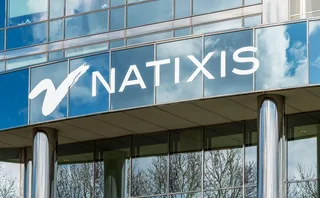
Fed steps in to support CMBS market
The US Federal Reserve will start accepting legacy commercial mortgage-backed securities (CMBS) as collateral under its Term Asset-backed Securities Lending Facility (Talf), as the US commercial real estate market continues to struggle.
The Talf programme was originally designed to restart the securitisation industry by offering investors cheap loans to buy AAA rated asset-backed securities (ABS). To encourage banks to start issuing new ABSs, the programme would lend only against newly issued securities - but on March 23, the Fed announced it would also lend against AAA rated 'legacy' securities, as part of the Public-Private Investment Program, intended to free banks of their billions of dollars of holdings of toxic ABSs.
"The resulting improvement in legacy CMBS markets should facilitate the issuance of newly issued CMBS, thereby helping borrowers finance new purchases of commercial properties or refinance existing commercial mortgages on better terms," the Fed said yesterday. Treasury secretary Tim Geithner added, in testimony today before the Senate Banking Committee: "Addressing the dislocation in the commercial real estate market through this programme is critical to restoring the flow of credit to owners of commercial real estate and preventing a damaging chain of events in this market."
The loans, which can be either three or five years in duration, will bear interest consisting of the relevant Libor rate plus 100 basis points. To protect the public interest, investors will be subject to a 15% haircut - meaning that to get funding to buy CMBSs, they will receive 85% of the total loan amount and pledge 15% as collateral. If the average life of the CMBS is greater than five years, the haircut will increase by one percentage point per year.
The New York Federal Reserve Bank, which will administer the loans, has not yet decided whether to allocate loans by auction or by other means, it said, adding that it might also require that the loans be used "to fund recent secondary market transactions between unaffiliated parties that are executed on an arm's length basis".
Though commercial mortgages are performing slightly better than residential mortgages, both are seeing rocketing delinquency rates. Commercial delinquencies rose to 6.4% in the first quarter of this year, and show no sign of slowing. And demand for commercial property has dropped by record amounts, according to research by the Center for Real Estate at the Massachusetts Institute of Technology (MIT).
David Geltner, director of research at the Centre, commented: "Sales volume is down almost to nothing, as reflected in our demand index, which indicates the prices buyers are willing to pay fell a record 12% in the first quarter and is now 28% below a year ago and 39% below its mid-2007 peak... This type of disconnect between the supply and demand sides of the market, with demand-side sentiment plunging and property owners refusing to sell into such losses, is greater than we have ever seen before, and is very nearly removing every bit of liquidity from the market."
See also: The big clean-up
Talf requests plunge $3bn to $1.7bn in latest funding round
Questions raised over US scheme to buy toxic assets
Time for Talf
Fed opens $800 billion war chest to aid securitisation recovery
Only users who have a paid subscription or are part of a corporate subscription are able to print or copy content.
To access these options, along with all other subscription benefits, please contact info@risk.net or view our subscription options here: http://subscriptions.risk.net/subscribe
You are currently unable to print this content. Please contact info@risk.net to find out more.
You are currently unable to copy this content. Please contact info@risk.net to find out more.
Copyright Infopro Digital Limited. All rights reserved.
As outlined in our terms and conditions, https://www.infopro-digital.com/terms-and-conditions/subscriptions/ (point 2.4), printing is limited to a single copy.
If you would like to purchase additional rights please email info@risk.net
Copyright Infopro Digital Limited. All rights reserved.
You may share this content using our article tools. As outlined in our terms and conditions, https://www.infopro-digital.com/terms-and-conditions/subscriptions/ (clause 2.4), an Authorised User may only make one copy of the materials for their own personal use. You must also comply with the restrictions in clause 2.5.
If you would like to purchase additional rights please email info@risk.net
More on Foreign exchange
LCH expects to boost deliverable FX clearing with new adds
Onboarding of dealers and link-up with CLS could swell interbank deliverable FX clearing volumes
Does no-hedge strategy stack up for mag seven mavericks?
At Amazon, Meta and Tesla, the lack of FX hedging might raise eyebrows, but isn’t necessarily a losing technique
Amazon, Meta and Tesla reject FX hedging
Risk.net study shows tech giants don’t hedge day-to-day exposures
Intraday FX swaps could signal new dawn for liquidity management
Seedling market could help banks pre-fund payments in near-real time and reduce HQLA requirements
Natixis turns on the taps in flow trading
French bank boosts flow business, balancing structured solutions capabilities
Stemming the tide of rising FX settlement risk
As the trading of emerging markets currencies gathers pace and broader uncertainty sweeps across financial markets, CLS is exploring alternative services designed to mitigate settlement risk for the FX market
Power-reverse to the future: falling yen revs up PRDCs again
Pressure on Japanese unit sparks revival in power-reverse dual currency notes
Credit Suisse and Commerz latest banks to ditch hold times
Mizuho also confirms zero last look add-on but MUFG’s policy unclear on the controversial FX practice







